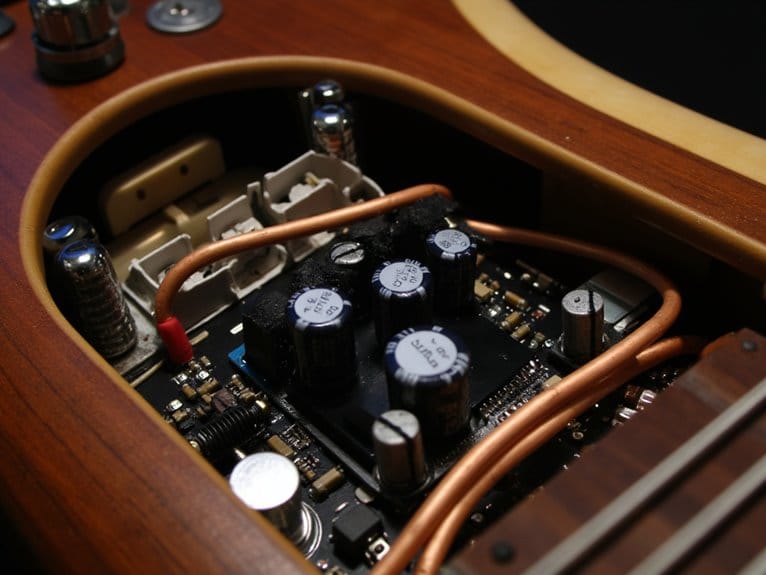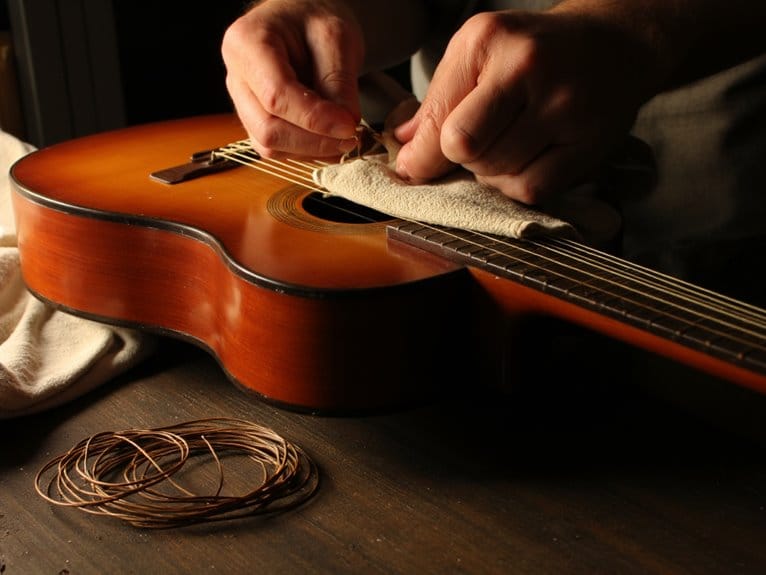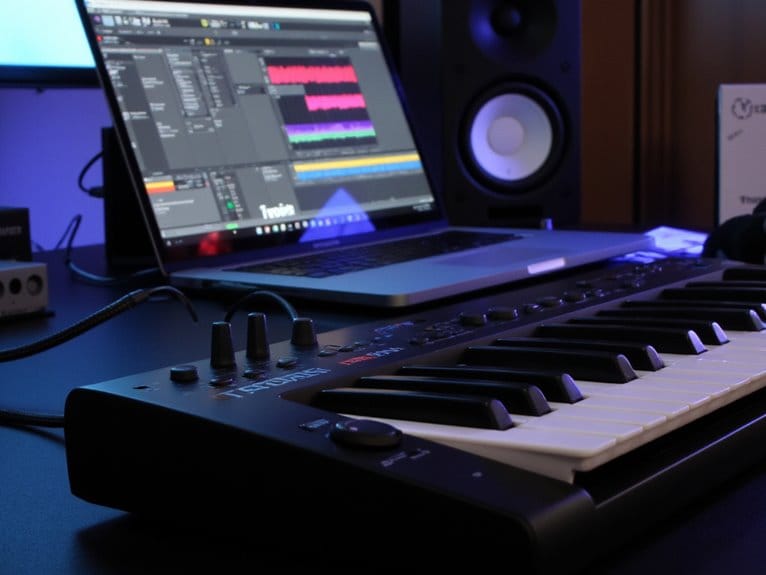What Is the Best Neck for a Beginner Guitar?
For a beginner guitarist, the ideal neck is a balance of width, profile, scale length, fretboard radius, and material. Neck width, typically between 1.65 and 1.75 inches, affects playability and comfort, with narrower necks suiting smaller hands. A rounded 'C'-shaped profile or a flatter 'D'-shaped profile influences finger movement and fretboard accessibility. Scale length, usually between 24.75 and 25.5 inches, impacts tone and playability. Fretboard radius, ideally around 12-14 inches, affects playing comfort and technique. Material choices like mahogany, maple, or rosewood also impact tone and playability. Understanding these factors is key to finding the perfect neck for a beginner, and there's more to investigate to make an informed decision.
We are supported by our audience. When you purchase through links on our site, we may earn an affiliate commission, at no extra cost for you. Learn more.
Neck Width: A Crucial Factor
When it comes to selecting the ideal neck for a beginner guitar, a pivotal element to ponder is the neck width, which typically ranges from 1.65 to 1.75 inches (42-44 mm) for electric guitars and 1.75 to 1.85 inches (45-47 mm) for acoustic guitars. A narrower neck width can facilitate easier playing and fretting, particularly for those with smaller hands. Conversely, a wider neck can provide more room for finger movement and a more comfortable playing experience. It's essential to ponder the player's hand size and playing style when determining the perfect neck width. A well-suited neck width can greatly impact the overall playing experience, making it a pivotal factor in choosing the best neck for a beginner guitar.
Profile and Shape Matter Too
Beyond the neck width, the profile and shape of the neck also play a significant role in determining the overall playing experience, as they can affect the comfort and accessibility of the fretboard. A rounded 'C'-shaped neck profile provides a comfortable fit for the player's hand, while a flatter 'D'-shaped profile offers more room for finger movement. The neck shape can also influence the player's ability to access the upper frets, with a thinner neck allowing for easier access. In addition, some necks feature a subtle 'V' shape or a pronounced 'soft V' shape, which can provide a more ergonomic playing experience. Moreover, the ideal neck profile and shape will depend on personal preference and playing style.
Scale Length and Its Effects
The scale length of a guitar, typically measured from the nut to the saddle, has a profound impact on the instrument's tone, playability, and overall character, making it a crucial factor for beginners. A shorter scale length, such as 24.75 inches, can result in a warmer, more relaxed tone and easier playability, while a longer scale length, like 25.5 inches, can produce a brighter, more articulate sound and slightly tighter string tension. For beginners, a scale length between 24.75 and 25.5 inches is often ideal, offering a balance of tone and playability. It's essential to weigh your personal playing style, musical genre, and tone preferences when selecting a guitar with the right scale length.
Fretboard Radius and Comfort
As a beginner guitarist navigates the complexities of scale length, another critical factor to ponder is the fretboard radius, which substantially influences playing comfort and overall technique. The fretboard radius refers to the curvature of the fretboard, measured in inches. A flatter radius (around 16-20 inches) allows for easier bending and fretting, while a more curved radius (around 7.25-12 inches) can facilitate chord playing and rhythm work. A comfortable fretboard radius enables smooth hand positioning, reducing fatigue and discomfort. For beginners, a medium radius (around 12-14 inches) provides a balance between playability and comfort, making it an ideal choice for those still developing their technique.
Material Options for Beginners
What role do different materials play in shaping the tone, playability, and overall appeal of a beginner's guitar, and how do they impact the learning process? As a beginner, it's essential to understand the characteristics of various materials to make an informed decision. Mahogany, a popular choice, provides a warm, rich tone and a comfortable playing experience. Maple, on the other hand, offers a brighter tone and a slightly harder playing feel. Rosewood, often used for fretboards, adds a touch of warmth and complexity to the sound. Other options like basswood, alder, and poplar provide a balanced tone and an affordable price point. Ultimately, the right material will depend on personal preference and playing style, but understanding the basics will help beginners make a well-informed choice.






